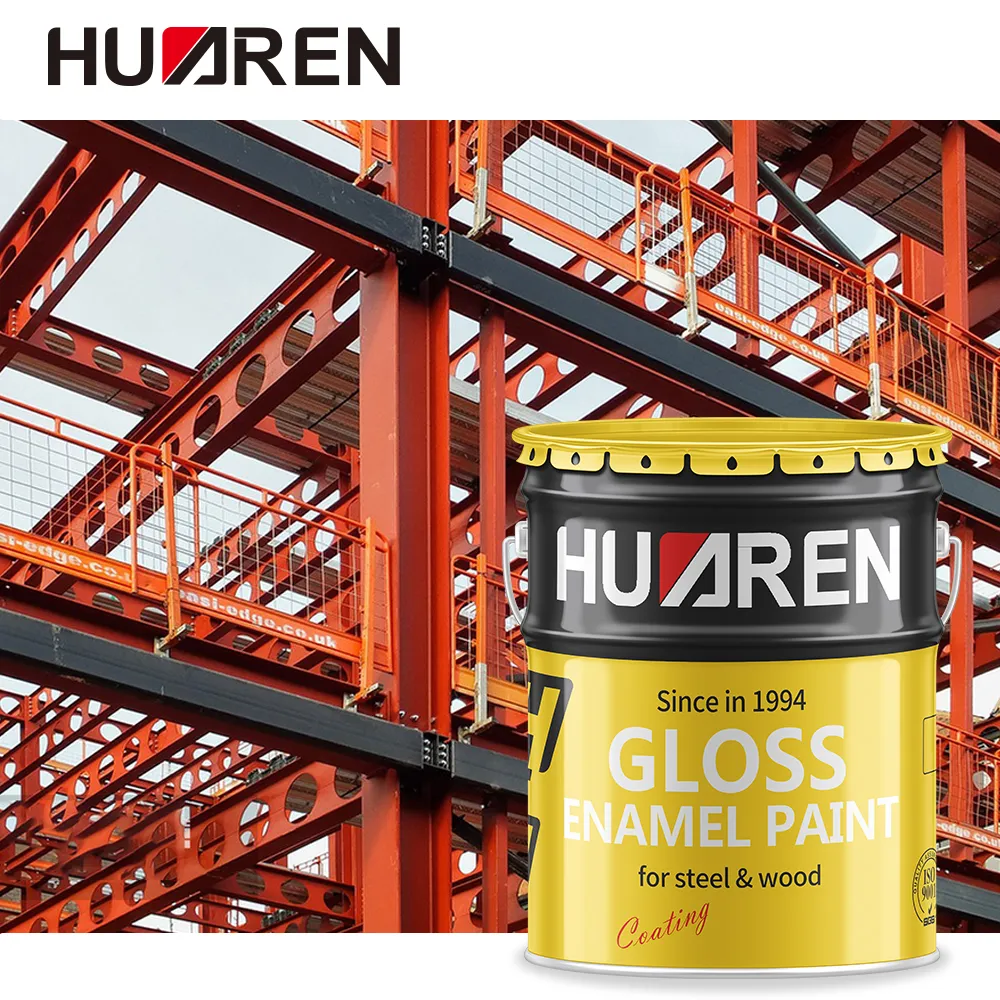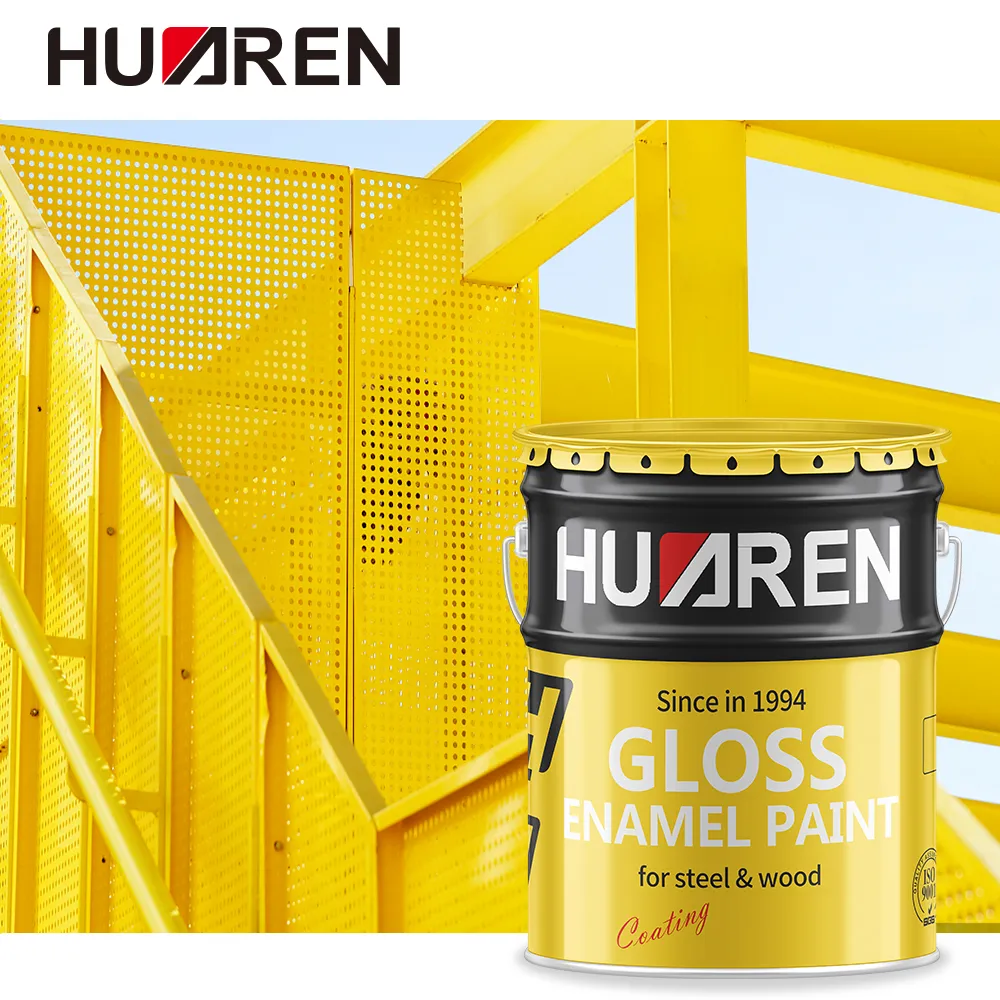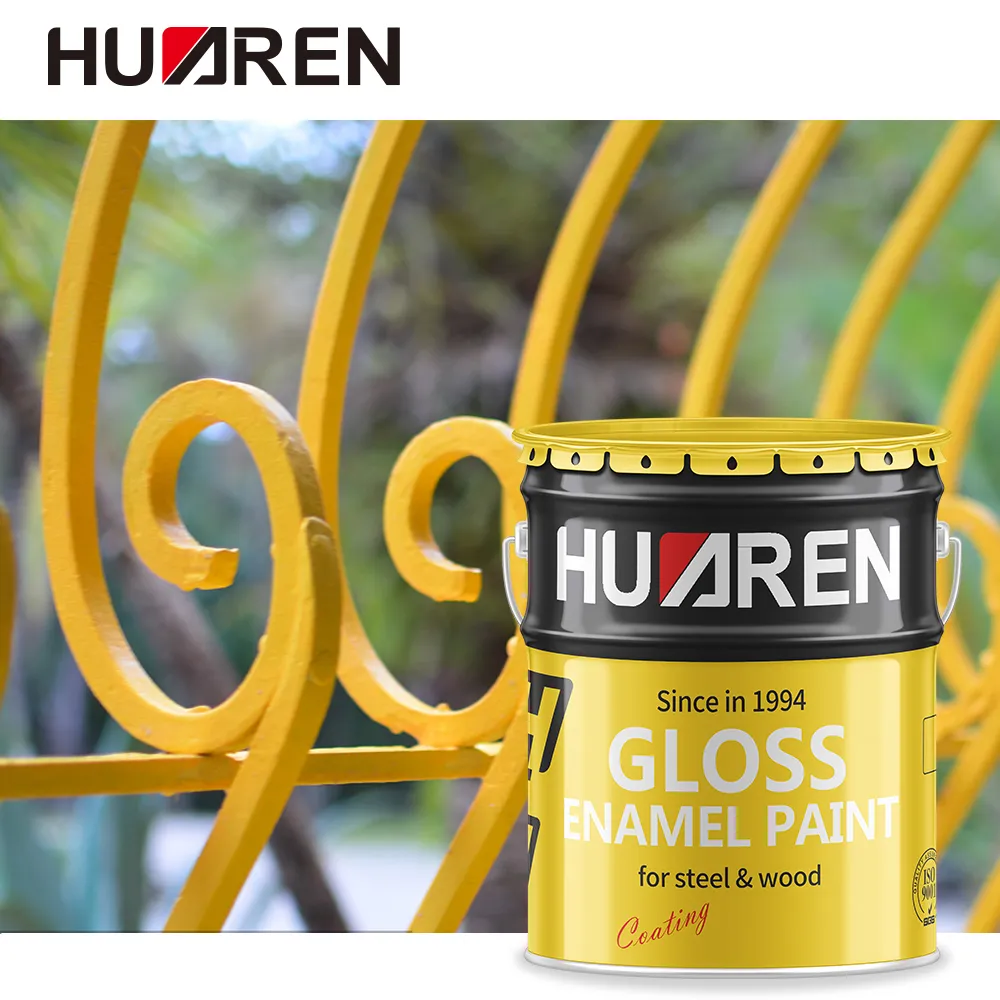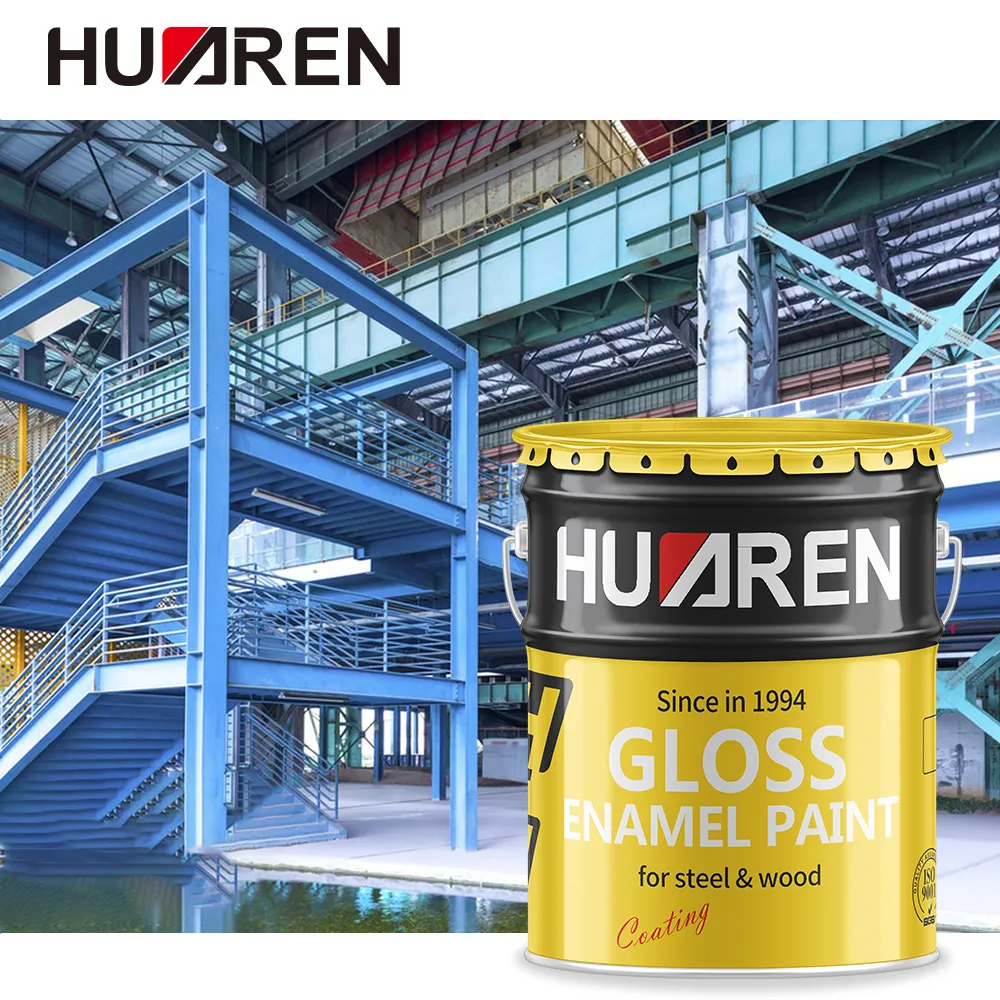Primers play a vital role in the metal coating process. Whether it is to provide protection for the metal or to ensure the adhesion of subsequent coatings, primers are often an indispensable part. So, for the application of industrial enamel paint (Enamel Paint), is it necessary to use a primer on the metal surface? This depends not only on the specific requirements of the coating, but also on the environment, the type of metal and the characteristics of the industrial enamel paint.
This article will explore in depth whether a primer is required when using industrial enamel paint on metal surfaces, what the specific role of the primer is, and how to correctly apply industrial enamel paint and primer in order and method.

What is industrial enamel paint?
Industrial enamel paint is a high-performance coating that is widely used for its hard, smooth and durable surface. It is a coating containing resins, pigments and other additives that can form a high-hardness coating after curing, which effectively protects the substrate and provides a bright appearance. Industrial enamel paint is commonly used on a variety of substrates such as metal, wood and plastic, and performs particularly well in environments that require high durability and aesthetics.
When applied to metal, industrial enamel paint can provide:
● Chemical resistance: It can effectively resist the attack of external chemicals, especially in industrial environments.
● High gloss and decorative: The smooth, reflective surface formed by industrial enamel paint after curing is very decorative.
● Abrasion resistance and hardness: Compared with ordinary paints, industrial enamel paint has higher hardness and abrasion resistance, which can better resist physical wear and tear.

What does primer do?
Primer is a coating specially designed to improve the adhesion of topcoats. It is usually applied to bare metal or other substrates and plays the following key roles:
Enhance adhesion:
One of the main functions of primer is to provide a more suitable surface for subsequent coatings to adhere more firmly to the substrate. Metal surfaces are usually smooth and dense, and when industrial enamel paint is applied, it may cause flaking, cracking and other problems due to insufficient adhesion. Primers form a transition layer that enhances the adhesion of the topcoat.
Rust and corrosion protection:
Metallic materials, especially iron and steel, are very susceptible to rust caused by moisture and oxygen in the air. Primers, especially anti-rust primers, can form a protective layer on the metal surface to prevent oxygen and moisture from contacting the metal, thereby delaying or preventing rust.
Sealing and filling functions:
Some metal surfaces may have tiny holes or rough textures, and direct application of industrial enamel paint may not produce a flat, smooth surface. Primers can seal and fill the metal surface to smooth the metal surface and ensure that the industrial enamel paint is evenly applied and beautiful.
Color transition:
Sometimes primers can also serve as a transition color layer, especially when the topcoat color is lighter or the substrate color is darker, the primer can improve the coverage of the topcoat.

Do you need to use a primer on industrial enamel paint on metal?
The answer depends on many factors. Although industrial enamel paint itself has strong adhesion and protection, in many cases, the use of primer is still the key to ensure the best painting effect. The following is an analysis of several specific scenarios:
Untreated bare metal
For bare metal surfaces without any treatment, the use of primer is almost necessary. Bare metal surfaces are usually smooth and hard, and direct application of industrial enamel paint may not achieve ideal adhesion. In particular, steel metals are very prone to rust without protection. If industrial enamel paint is directly applied, due to insufficient protection of the base layer, once the paint film is slightly damaged, moisture and oxygen will quickly penetrate into the metal surface, causing rust to spread. Therefore, in such cases, primers can provide the necessary adhesion and anti-rust protection.
Recommended types of primers include:
● Anti-rust primer: It can provide basic anti-corrosion protection for steel metals.
● Epoxy primer: This primer has extremely high adhesion and excellent water and chemical resistance, and is suitable for use on various metal surfaces.
● Zinc-rich primer: used to enhance the corrosion resistance of metal surfaces, especially for steel metals that need to be exposed to harsh environments for a long time.
Primed metals
If the metal surface has been primed, then it is feasible to apply industrial enamel paint directly. The primer has already provided sufficient adhesion and protection for industrial enamel paint, and industrial enamel paint can further enhance the appearance and durability. In this case, the main role of applying industrial enamel paint is to provide additional chemical resistance and aesthetics.
Non-ferrous metals such as aluminum and stainless steel
For non-ferrous metals such as aluminum and stainless steel, the importance of primers remains. These metals have strong corrosion resistance, but their surfaces are usually smoother and have weaker adhesion when directly applied with industrial enamel paint. Therefore, even for metals with good corrosion resistance, it is recommended to use a primer designed specifically for non-ferrous metals to ensure that industrial enamel paint can adhere firmly and provide long-term protection.
Metal facilities in industrial or outdoor environments
In industrial or outdoor environments, metal equipment is often exposed to a variety of harsh conditions, such as humidity, chemical corrosion, high temperature or mechanical wear. To ensure that the coating can withstand these challenges, the use of primers is particularly important. In these environments, primers not only enhance the adhesion of industrial enamel paint, but also provide additional corrosion and oxidation protection for the metal.
Metal products that require special aesthetic effects
For metal products that require a high-gloss, flat surface, such as metal furniture, home appliances or automotive parts, the use of primers can help improve the aesthetics of the final coating. Industrial enamel paint coating can form a smoother, flawless surface effect based on the primer, especially when spraying large areas, the primer can ensure the uniformity and gloss of the coating.
What are the criteria for selecting primers?
When choosing a primer for industrial enamel paint, it is necessary to conduct a specific analysis based on the metal type, environmental conditions and usage requirements. The following are several common primers and their advantages and disadvantages:
Epoxy primers
● Advantages: strong adhesion, corrosion resistance, suitable for use in harsh environments.
● Disadvantages: Long curing time, requiring a long construction period.
Polyurethane primer
● Advantages: Good chemical resistance, certain elasticity, suitable for environments with high temperature or high mechanical stress.
● Disadvantages: High price, strict construction conditions.
Anti-rust primer
● Advantages: Suitable for iron products, can prevent metal from rusting.
● Disadvantages: Generally only used for rust prevention, relatively ordinary adhesion.
Zinc-rich primer
● Advantages: Extremely strong anti-corrosion ability, suitable for metal facilities exposed to the outside world for a long time.
● Disadvantages: High price, and in some cases need to be used with other primers.

How to apply industrial enamel paint and primer correctly?
Before applying primer, the metal surface must be thoroughly cleaned to remove pollutants such as oil, dust, old paint and rust. Then use sandpaper or abrasives to roughen the metal surface to enhance the adhesion of the primer. Secondly, select the appropriate primer according to the metal type and environment, apply it evenly on the metal surface, and pay attention to controlling the coating thickness.
Finally, let the primer dry fully, which may take anywhere from a few hours to a day or two. Once the primer is completely dry, apply the industrial enamel paint, which usually requires 2-3 coats, making sure to allow adequate drying time after each coat.
Is Huaren Chemical a reliable supplier of high-quality paints?
Absolutely! As one of China’s leading manufacturers of industrial coatings, Huaren Chemical Industry Co., Ltd. provides high-quality paints and resins for a variety of industries. Our products, including epoxy and phenolic paints, are designed to meet the most stringent standards. With a reputation for reliability and competitive pricing, we are a trusted supplier for clients in countries like Nigeria, South Africa, India, and Europe.

